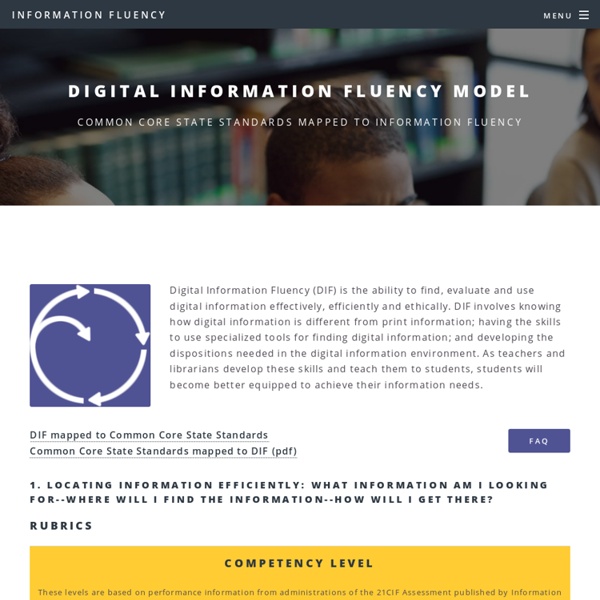Information fluency model
Digital Information Fluency (DIF) is the ability to find, evaluate and use digital information effectively, efficiently and ethically. DIF involves knowing how digital information is different from print information; having the skills to use specialized tools for finding digital information; and developing the dispositions needed in the digital information environment. As teachers and librarians develop these skills and teach them to students, students will become better equipped to achieve their information needs. FAQDIF mapped to Common Core State Standards Common Core State Standards mapped to DIF (pdf) 1. Rubrics 2. 3. It could be argued that Competency in Ethical Use should be demonstrated by "always citing the source" and that anything less demonstrates incompetency. 4.
How to Create an Infographic in an Hour or Less [5 Free PPT Templates]
Wouldn't it be great if creating infographics was as simple as writing regular ol' text-based blog posts? Unfortunately, the reality is that making visual content like this usually takes a lot more time, effort, and let's face it -- skill -- than the written word. Usually. But considering the popularity and effectiveness of visual content in marketing today, you can't just afford to throw in the towel. That's why we decided to take all the pain and suffering out of infographic creation. Download our 15 free infographic templates here. Then, all you have to do is provide the content to use inside them. Would you rather watch this tutorial instead of read it? Click here to download your free infographic templates. How to Create Infographics For Free in Under an Hour Step 1: Collect your data/content, and choose your desired template. You can either collect third-party data or use your own original data. Step 2: Customize your infographic. That's it! Share this Image On Your Site
Interesting Flipped Classroom Statistics
Classrooms all over the world are being flipped – and with good reason. More and more studies are revealing that a flipped classroom environment is enhancing learning retention. What is a flipped classroom? The flipped learning approach involves taking direct instruction and placing the onus on the individual learner rather than group instruction. For example, taking an online course to learn the content. Classroom time is then spent applying the content rather than direct instruction. Does it Work? In short – yes. One important distinction to make about flipped classrooms is that not every subject needs to take on this approach. Sources:Sophia.orgFlipped Learning Network Justin Ferriman is the Founder of LearnDash, a WordPress based LMS and Learning Strategy provider.
Related:
Related:



